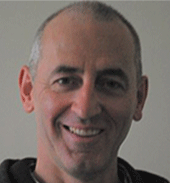Book Review 2011
Here's my favourite books of the year:
Human Anatomy, Depicting the Body from the Renaissance to Today - Rifkin, Ackerman, Folkenburg (Thames & Hudson) One of my favourite books ever. A remarkable collection of anatomy images spanning 500years - basically a history of anatomy and anatomists from Vesalius (1514-1558) arguably the father of anatomy through to Henry Gray (1827-1861) and modern anatomists. It's also a book about the change in Western culture as anatomy and the study of the body moves from the divine and mystic through to the scientific along with attitudes towards the body and death. An absolute must for all anatomy lovers. Here's a few images from the book all in the public domain but not easy to get hold of:[gallery]
The Tell-Tale Brain - VS Ramachandran (Heinemann) A leader in the neuroscience field and a very charismatic character who has spend his career making huge headway in the understanding of neural communication and consciousness through his study of phantom limbs and neuropathology. He's not scared to hypothesize and has a good look at the development of language and how introspection evolved. Great sections on empathy and aesthetics. Love the chapter on 'the neurons that shaped civilization'. Here's a link to a youtube video of him speaking about this......http://youtu.be/t0pwKzTRG5E
The Epigenetics Revolution - Nessa Carey (Icon) There aren't too many books around on this fascinating subject especially ones that are accessible and easy to fathom. The author elegantly and scientifically explains what epigenetics means and its implications for understanding health and the body. There's some quite full on biochemistry in some sections but worth persisting to get a good handle on the science. Here's a wonderful excerpt:An abusive or neglectful environment when young is clearly a major risk factor for the development of later neuropychiatric disorders. We are so aware of this as a society that sometimes we almost forget to question why this should be the case. It just seems self-evident. But it's not. Why should events that lasted for two years, for example, still have adverse consequences for that individual several decades later?One explanation that is often given is that the chidren are 'pyschologically damaged' by their early experiences. Whilst true, this isn't that helpful a statement. The reason why it's not helpful is that the phrase 'psychologically damaged' sin't really an explanation at all - it's a description. It sounds qutie convincing but on certain levels it doesn't really tell us anything. Any scientist addressing this problem will want to take this description and probe it at another level. What are the molecular events that underlie this psychological damage? What happens in the brains of the abused or neglected children, that leaves them so prone to mental health problems as adults?There is sometimes resistance to this approach from other disciplines, which work within different conceptual frameworks. This seems rather puzzling. If we don't accept there is a molecular basis to a biological effect, what are we left with? A religious person may prefer to invoke the soul, just as a Freudian therapist may invoke the psyche. Both of these refer to a theoretical construct that has no defined physical basis. Moving into such a model system, where it is impossible to develop the testable hypotheses that are the cornerstones of scientific enquiry, is deeply unattractive to most scientists. We can probe for a mechanism that has a physical foundation, rather than defaulting to a scenario in which there is something which is assumed, somehow, to be a part of us, without having any physical evidence........The human brain possesses sufficient flexibility to generate different adult outcomes in response to similar childhood experiences. Our brains contain one hundred billion nerve cells. Each neuron makes links with ten thousand other neurons to form an incredible three dimensional grid. This grid therefore contains a thousand trillion connections - that's a quadrillion. It's hard to imagine this so let's visualize each connection as a disc that's 1mm thick. Stack up the quadrillion disks on top of each other and they will reach to the sun and back, three times over. Thats a lot of connections, so it's perfectly possible to imagine that our brains have a lot of flexibility. But the connections are not random. There are networks of cells within the giant grid which are more likely to link to each other than to anywhere else. it's this combination of huge flexibility, but constrained within certain groupings, that is compatible with a system that is mechanistic but not entirely deterministic.
The Hidden Reality - Brian Greene (Alfred A. Knopf)Amazing physicist with an ability to convey maths and physics in a very clear and exciting way. He's deeply interested in the string theory and the idea of multi-dimensions and multi-universes. Whether you agree with it or not, it's definitely a useful mind expanding process. He explains it really well on the embedded video:http://youtu.be/YtdE662eY_M





 Ged Sumner
Ged Sumner